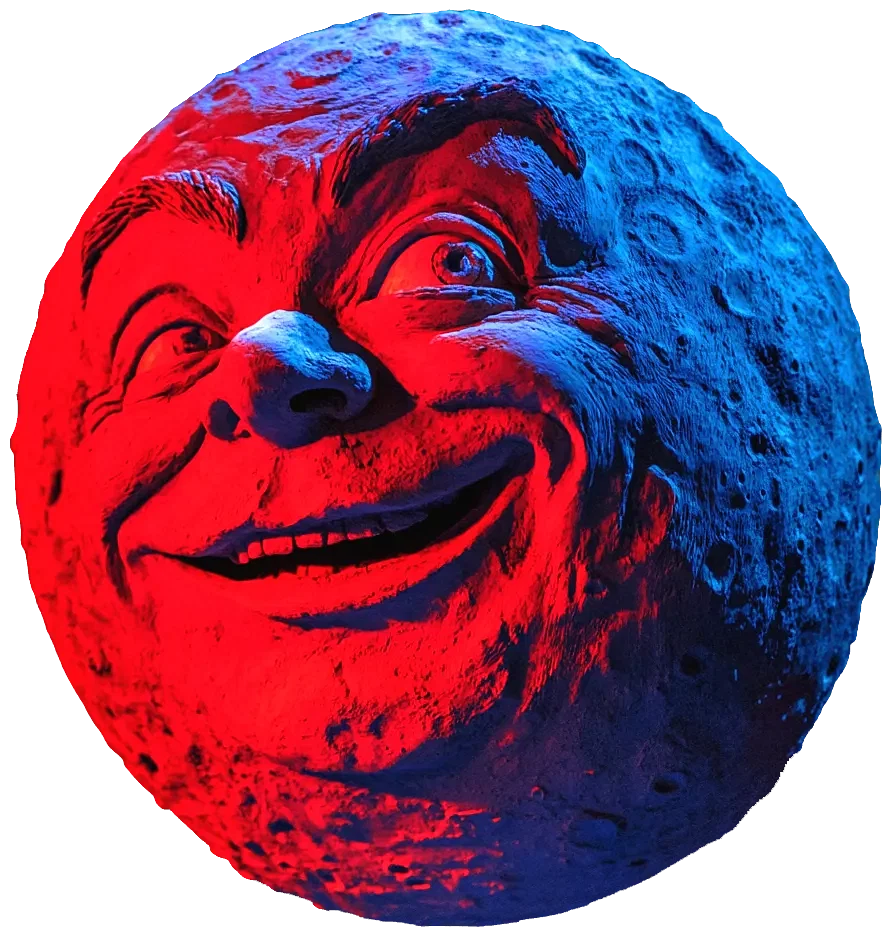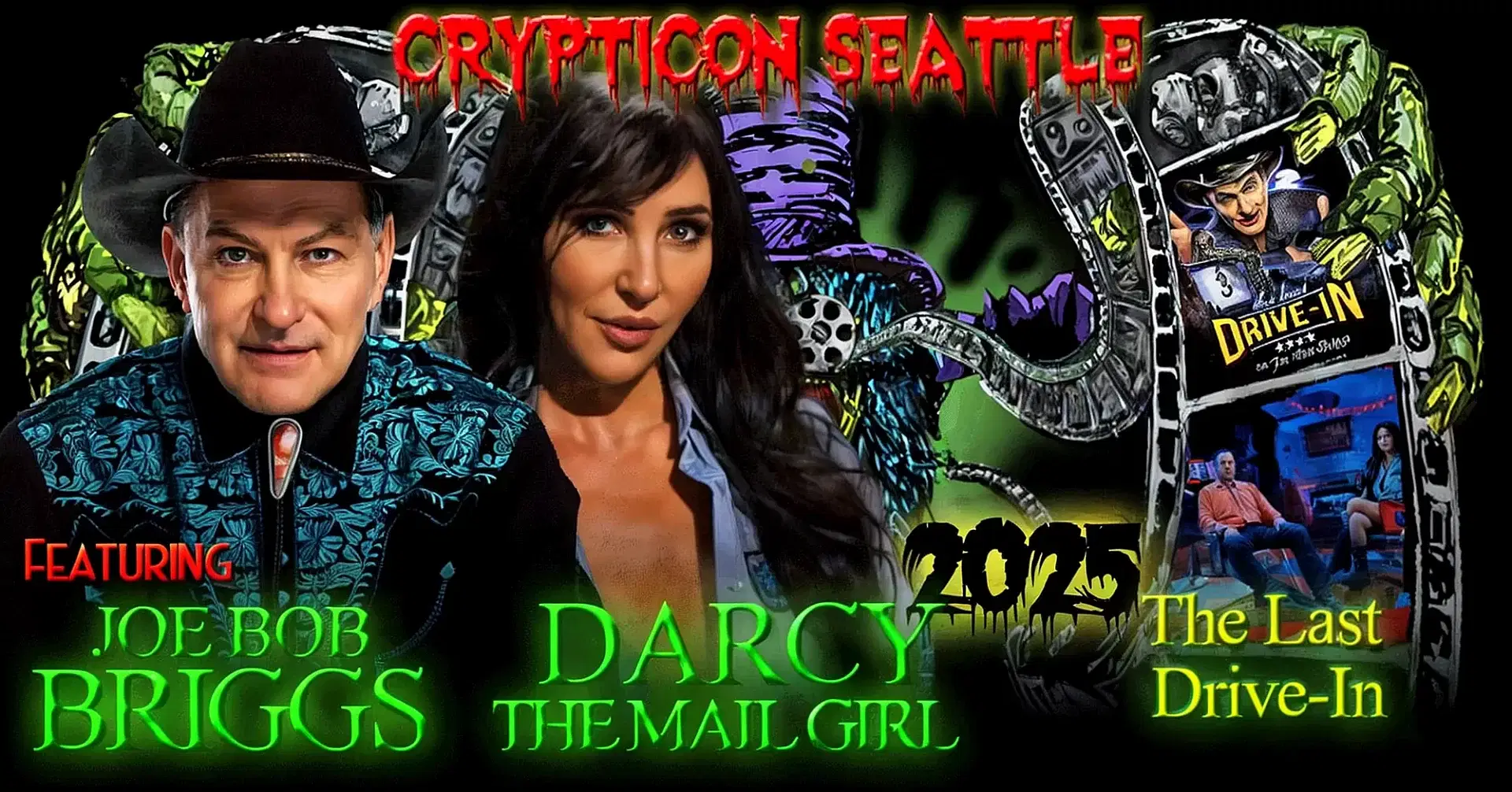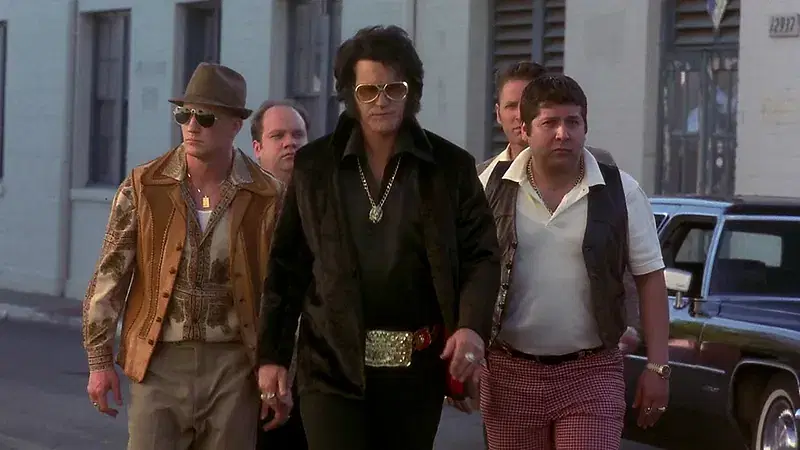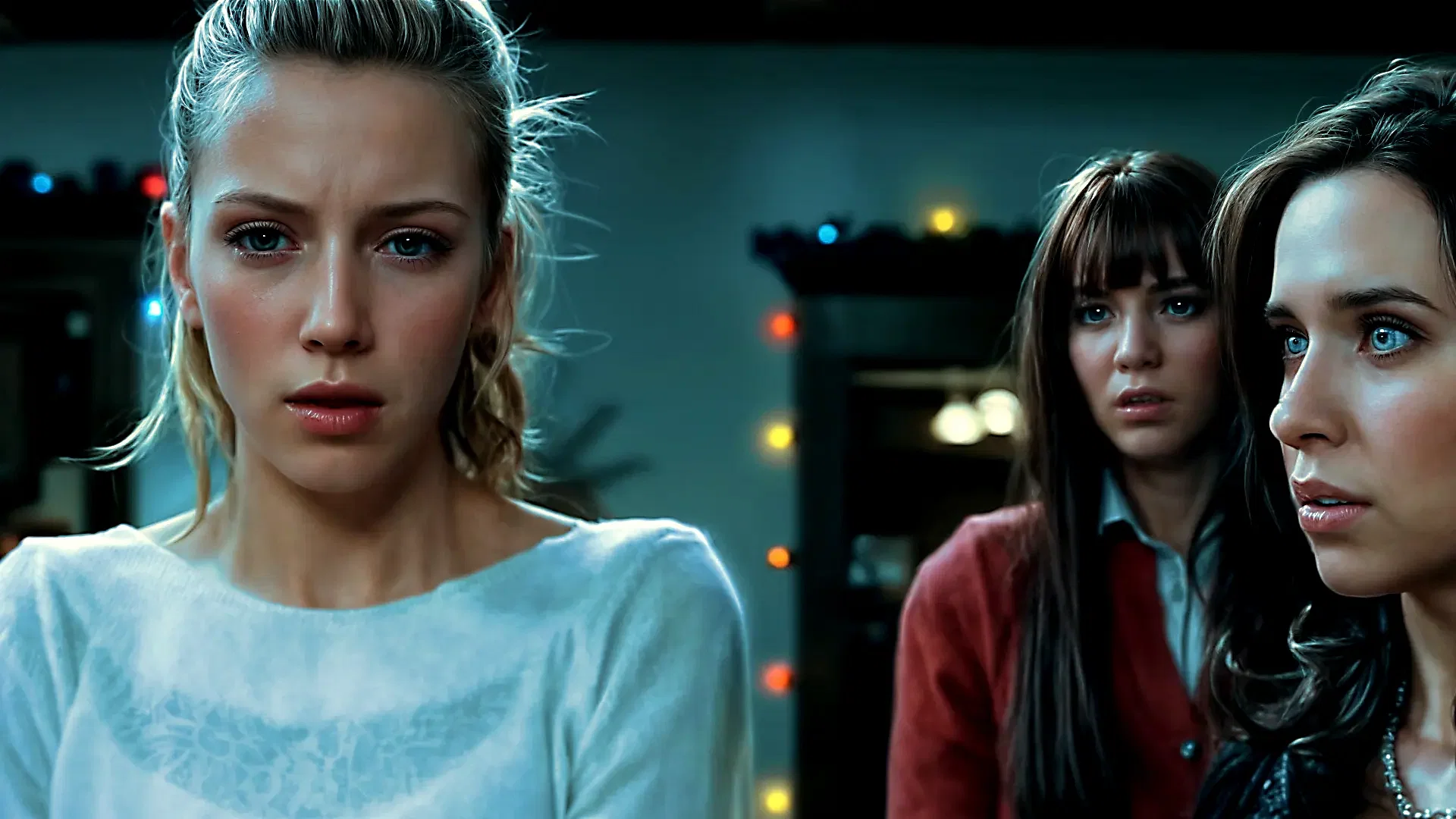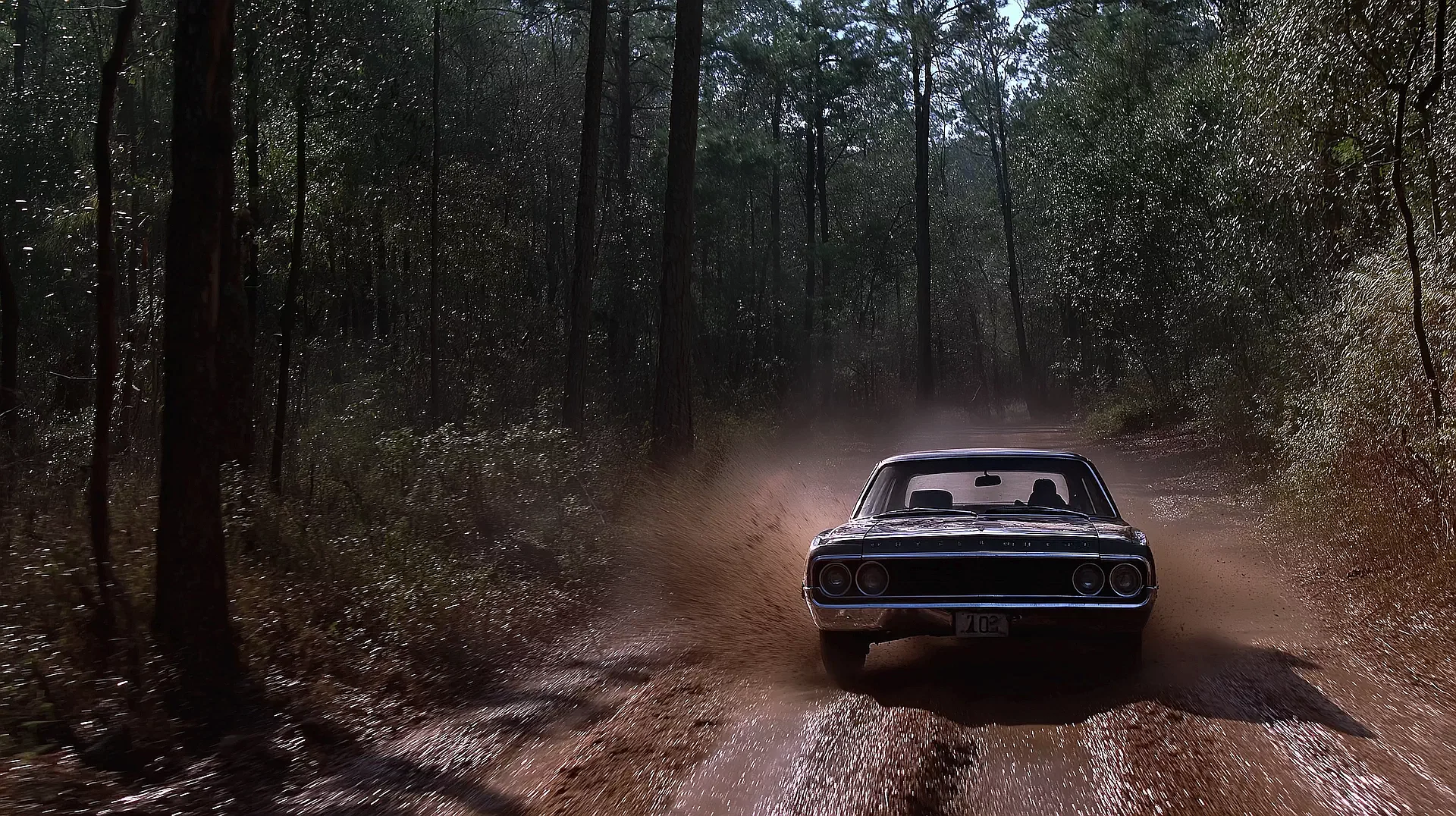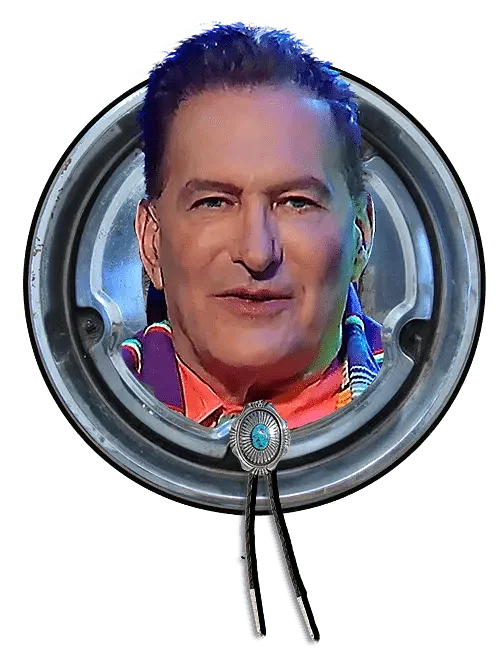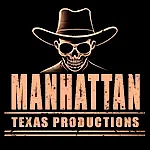The Pope of Pop Culture, the first Drive-In Academy Award winner, the King Roger Corman beamed in to close out Season Three of The Last Drive-In. (Art by T.J. Denton @TDenton_1138 on Twitter)
If you were going to pick the one giant shining celestial body that the Drive-In Universe rotates around, you could do no better than the guest on the Season 3 finale, Roger Corman. (And if you’re on the less sunny side of the cosmic spectrum, he’s the Cthulhu from whose tentacled visage all things Mutant hath slithered.)
Over his half-century in the movie biz as a producer, director and actor, Roger’s truly been the wellspring from which the Mutant tradition of blood, breasts and beasts gushed forth – and you can look it up. Joe Bob Briggs hisownself has said as much. Joe Bob gave his first published four-star Joe Bob Goes to the Drive-In review* in the Dallas Slimes Herald to the Corman-produced Forbidden World (aka Mutant) published April 16, 1982, with enthusiastic commentary on the movie’s great “glandular effects.”
* Time Bandits was reviewed in the column a couple months earlier but did not have a star rating when printed. When asked, JBB said Terry Gilliam’s flick was four stars all the way.
Of course, that four-star review caught the attention of big Roger out in California, who immediately revised his marketing campaign to include JBB’s rave in some of the subsequent newspaper advertising for the flick when it played in the weeks following.
That led to an invite in the summer of 1982 for Joe Bob to check out the New World Pictures studio out in California where the newly minted Drive-in Critic met the Drive-in King.
It was an emotional visit. Joe Bob shed a tear when he saw the Mutant from the flick rotting outside the studio. He stayed in a sketchy hotel. But the results of the confab at the New World Pictures headquarters between JBB and Roger were historic. Corman shared his patented formula for pacing a drive-in movie, and revealed his shorthand for the three main ingredients of a drive-in flick — the three Bs that constitute the sacred essential proteins of the Drive-In Oath and the Drive-In Totals — and sent the drive-in reviewer forth.
A second result of the meeting came months later with the institution of the Drive-In Academy Awards — traditionally an engraved Chevy hubcap — and nicknamed the Hubbies. Corman became the first recipient at the First International Drive-In Festival and Custom Car Rally at the late Gemini Drive-In in Dallas in October 1982, nearly three decades before the Academy of Indoor Bullstuff got off their hineys and gave Roger one of those gold-plated statuettes for lifetime achievement (which might look nice sitting around in the house, but you can’t put it on a 1968 Caprice).
And a third result was that from then on out, from Screwballs to Sharktopus and beyond, Joe Bob always would have some flicks from New World and then Concorde-New Horizon pictures to check out for print or for his shows and an open line to get in touch.
And Roger, now 95 and the maker of more than 400 movies, is still doing it — once more shooting the breeze with Joe Bob and sharing the wisdom of the Drive-In Way that flows through the Mutant Family (it’s like the Force, only cheaper, and it’s been around longer) as Last Drive-In Season Three-o closed out with a four-star-all-around double feature of Little Shop of Horrors and Humanoids From the Deep.
Little Shop was a case where Roger was doing his best to outdo himself while not wanting a good set to go to waste. He set a personal record by doing Bucket of Blood in five days and then decided on a bet to do another flick even quicker, which is one of the reasons why Mel Welles was talking so fast when reciting his approximately 90 pages of dialogue in the 72-minute flick in which stuff like this happened (hat tip to Shudder Twitter):
Speaking of being snappy like Audrey II, if you want to make a flick like Roger, he says:
- He took acting classes, not just to meet actors, but to understand them and see how the process worked.
- Low-budget horror is still the easiest and most-logical genre to try to break in with.
- Script development can happen during a pub crawl as long as you have the right writing partner.
- A lack of formal acting training is not a deal-breaker. If someone can do the job and has a look to him (RIP Dick Miller), then you might have yourself a solid star.
- Forming a troupe gets things done quicker, and filmmaking is not a solo endeavor.
- Studio backing on a flick means the executives get involved. Executives getting involved makes film, as Corman referenced in his honorary Indoor Bullstuff Award in 2009, a “compromised” art form since there’s business involved.
- And, finally, “All rules exist to be broken.”
And as Joe Bob brought it up, imagine how many flicks Roger could have made back in the day if they didn’t have to take all that time having the crew load cameras and moving the suckers and had digital instead? He made 40 flicks in six years at his most prolific and had achieved “reasonable competence” (his words) just a few years after directing his first movie.
But Corman got tired of the grind of directing in the early 1970s and instead focused on the less-draining task of producing, setting trends as the Pope of Pop Culture all through the 1970s and early 1980s with New World that churned out nurse flicks, women-in-prison flicks, sci-fi flicks, horror flicks, car chase flicks, redneck flicks and released foreign flicks for the drive-in market. The two biggies starting out this roll were Student Nurses and the women-in-prison classic The Big Doll House, which made New World instantly profitable and paved the way for a flood of drive-in classics most every old-school Mutant would recognize.
One such flick was our second feature that had a whole lot of subtext about ecological dangers, economic degradation in small towns, Salmon queens, violence against women, and even more dogs getting killed sardine-canned in its monster-movie shell and one heckuva title — Humanoids From the Deep. (The less-censored European cut was titled Monster, in case you were wondering why Humanoids wasn’t huge on the title card).
And here are those totals, courtesy of the peerless tweeter of Shudder:
The three B’s were there, there was some intrigue about the production (including how there was a fake name “Beneath the Darkness,” so that the bigger acting names wouldn’t know that they were in a movie about horny fish monsters until it was too late), and we got some more filmmaking tips from Roger:
- You can have all the subtext you want, but don’t lose sight of the main point of entertaining the audience. If it’s going to be marketed as a monster or horror movie, then it better have monsters and horror.
- Back in the day, 80-minute flicks were the rage because they cost less to ship.
- Car stunts aren’t expensive if you buy them used, and you need to have the burn after the crash to increase the spectacle.
- Sometimes a filmmaker has no choice but to change — hanging on to the old rules can lead to disaster and failure. A case in point: Roger’s rule was that if the monster looks bad, then you’d hide it until the end like they did with the $200 creature used in Monster From the Ocean Floor. Humanoids was an exception because Rob Bottin’s effects were great.
- Starting as an editor as Francis Ford Coppola and Peter Bogdanovich did helped them get their eyes for film.
- Don’t be afraid to scramble your cast if someone doesn’t work out.
- Do the hard stuff first.
- Have a plan when starting out, but be open to change it.
- And lastly, open and close big and people won’t pay as much attention to the stuff that might not work in the middle.
Even at his age, Roger has projects on tap — a remake of The Unborn, a project called Crime City that uses footage from a hurricane-ravaged Nassau and finally, a re-re-re-re-re-visiting of some of the themes put forth in 1975’s Death Race 2000 (which inspired Mad Max) in a flick called Death Games and even lent his name to a quarantine film festival.
Thank you, Roger, for closing out a spectacular Season Three-o on a memorable note. Keep working, and we will keep watching!
And as a final bonus, I’m going to hammer you all with one more list. In the opener, Joe Bob offered his tips on picking a good gym in case you want to work out with that five or so hours of spare time you have gained every week until we meet again.
- Has to have active members — look for guys with knife scars.
- Has to have impossibly large 150-pound hand weights.
- No trampoline cardio classes or underwater cycling.
- No pastel color decorations.
- Signs on the walls have to trend toward the disgusting.
- Your spotters at the real gyms wait until the last half-second before preventing you from crushing your skull when benching.
- When a message is announced for “Manny,” seven people need to respond.
- There are at least 10 folks who are there all the time and apparently do not leave.
- There aren’t any saunas, steam rooms or showers.
You aren’t gonna find any of that at Planet Fitness.
We’ll see you down the road. I heard there’s something that’s goin on in July in Pennsylvania (I’ll be there, so say hi), and there will be some more movie reviews from yours truly in the near future. Until then, take it from the talking plant up top there: The drive-in will never die.

